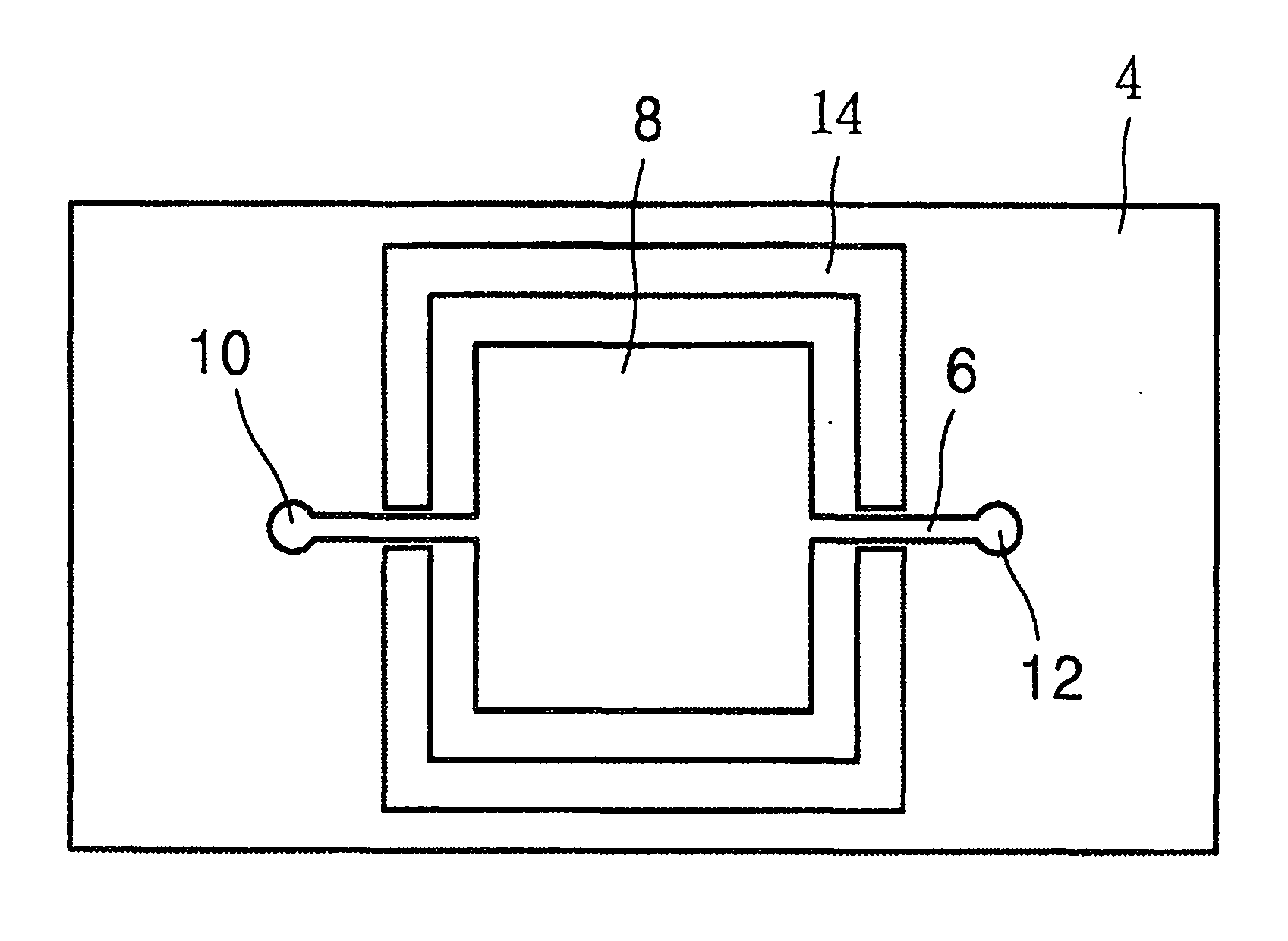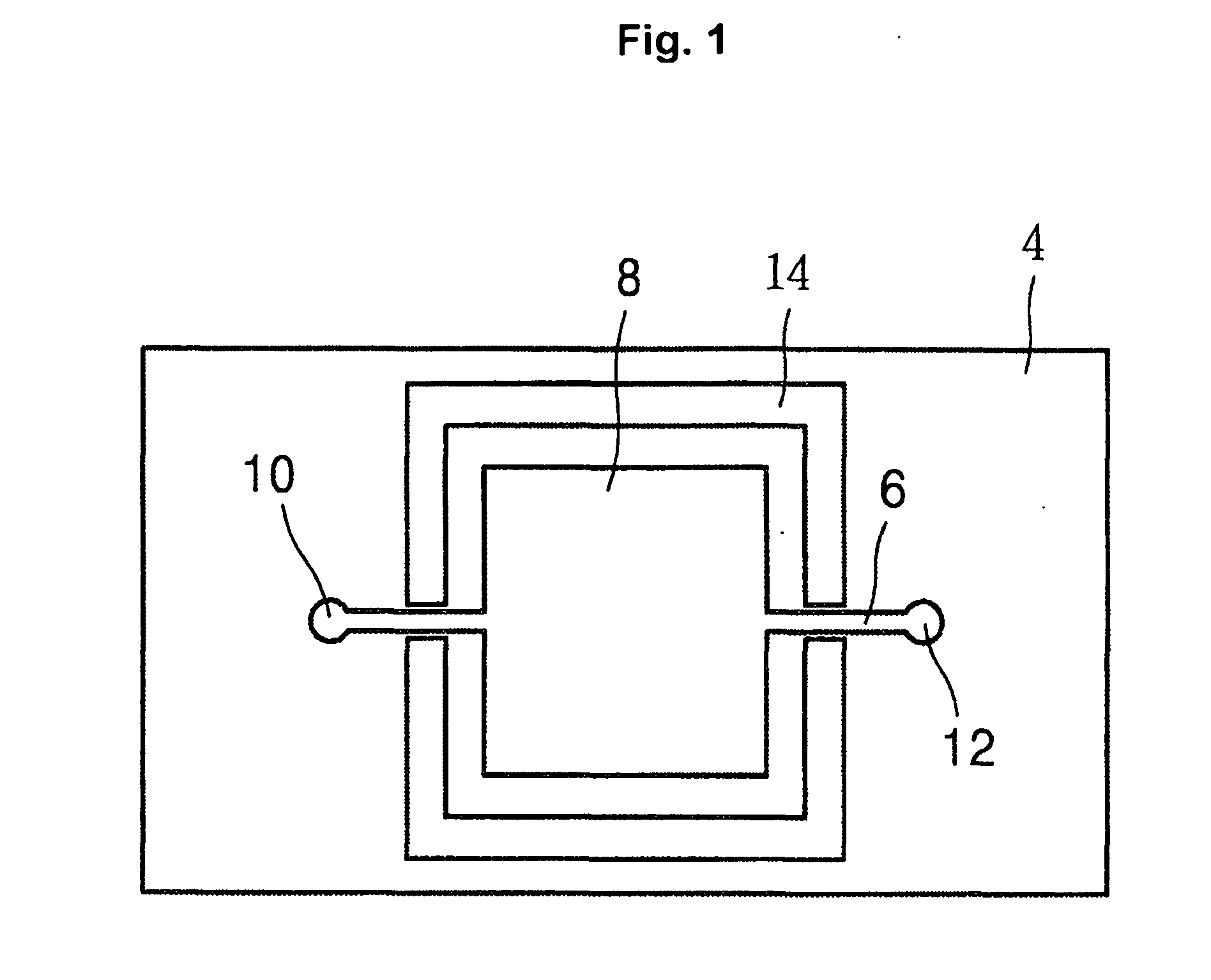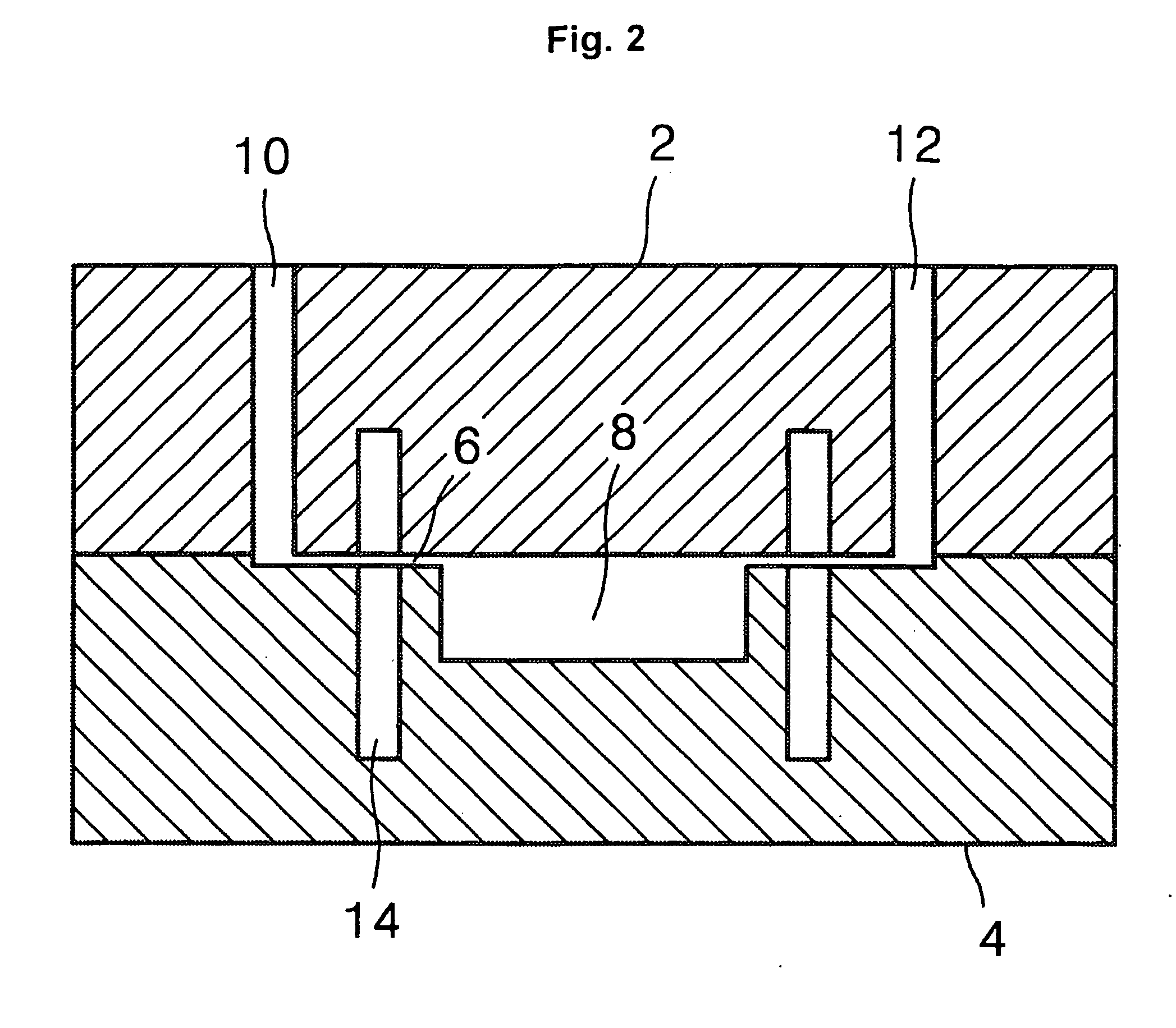Apparatus and method for amplifying a polynucleotide
- Summary
- Abstract
- Description
- Claims
- Application Information
AI Technical Summary
Problems solved by technology
Method used
Image
Examples
example 1
Temperature Increase Profile and Temperature Distribution of a Chamber According to Presence or Absence of an Insulation Groove in an Apparatus for Amplifying a Polynucleotide
[0039] (1) Measurement of Temperature Distribution
[0040] A temperature distribution was measured for an apparatus for amplifying a polynucleotide having an insulation groove around the chamber as shown in FIG. 1 while heating the reaction chamber upto 410K. As a control, an apparatus for amplifying a polynucleotide without an insulation groove was used. The apparatus for amplifying a polynucleotide without an insulation groove is the same as the apparatus described in FIG. 1 except that it has no insulation groove. The groove has a width of 1 mm and a depth of 250 μm.
[0041] Power consumption for raising the temperature upto 410K was about 2.8 W in an apparatus for amplifying a polynucleotide having an insulation groove, while 4W in a control apparatus. Therefore, the power consumption was reduced by 30%, and...
example 2
Temperature Regulation in an Apparatus for Amplifying a Polynucleotide having Multiple Reaction Chambers
[0045] In this example, an apparatus for amplifying a polynucleotide having four chambers and a temperature sensor of a platinum thin film as shown in FIG. 3 was used, and the temperature of the reaction chamber was controlled.
[0046] 3.6 μl of a PCR reaction solution was added into the sample inlet port 10 and the sample flow channel 6, and then to the polymerization reaction chamber 8 (FIG. 3). Temperature control information for the temperature cycles of 30 secs at 55° C., 30 secs at 72° C., 30 secs at 90° C., and 30 secs at 95° C. was input into the controller and the power controller was driven.
[0047]FIG. 5 is an oscillograph illustrating a potential change of a temperature sensor of a multiple chamber apparatus for amplifying a polynucleotide according to one embodiment of the present invention. In FIG. 5, x axis represents the time and y axis represents the potential. Rea...
example 3
PCR using an Apparatus for Amplifying a Polynucleotide having a Multiple Reaction Chamber
[0050] A PCR was conducted by using an apparatus for amplifying a polynucleotide having four chambers as shown in FIG. 3 and a platinum film temperature sensor.
[0051] The PCR using said apparatus was performed by using a PCR Core system 11 (Promega Co., Madison, U.S.A). A premix containing upstream and downstream control primers, dNTP, salts, DNA polmerase, and the plasmid DNA sample was prepared. The premix was supplied into the sample inlet port and delivered to the polymerization reaction chamber of 2.6 μl volume through the sample flow channel. The sample inlet port and outlet port were sealed by using an epoxy material. The PCR temperature cycle included 30 secs at 55° C., 30 secs at 72° C., and 30 secs at 95° C., and 30 cycles were repeated for PCR.
[0052]FIG. 9 is a photograph showing a result of gel electrophoresis for a PCR product amplified by using the multiple chamber apparatus of ...
PUM
| Property | Measurement | Unit |
|---|---|---|
| Width | aaaaa | aaaaa |
| Width | aaaaa | aaaaa |
| Width | aaaaa | aaaaa |
Abstract
Description
Claims
Application Information
 Login to View More
Login to View More - R&D
- Intellectual Property
- Life Sciences
- Materials
- Tech Scout
- Unparalleled Data Quality
- Higher Quality Content
- 60% Fewer Hallucinations
Browse by: Latest US Patents, China's latest patents, Technical Efficacy Thesaurus, Application Domain, Technology Topic, Popular Technical Reports.
© 2025 PatSnap. All rights reserved.Legal|Privacy policy|Modern Slavery Act Transparency Statement|Sitemap|About US| Contact US: help@patsnap.com



